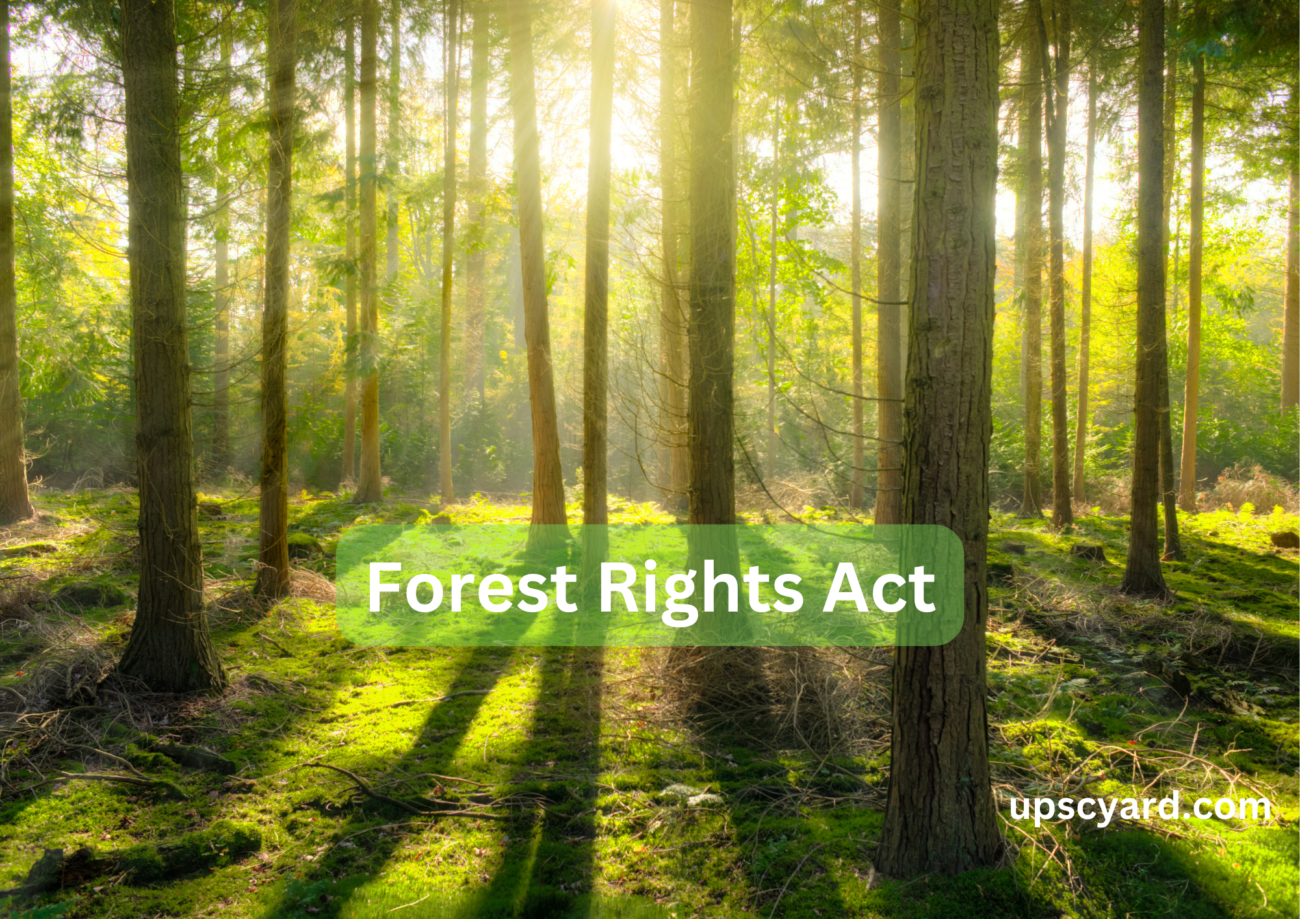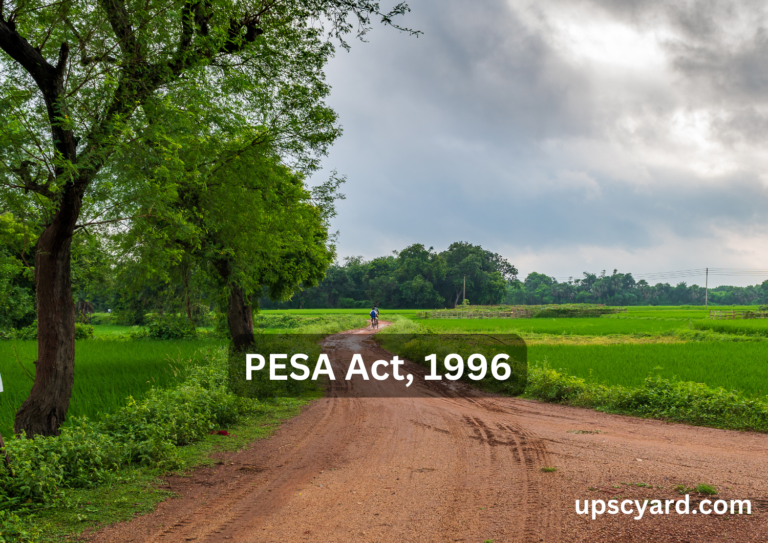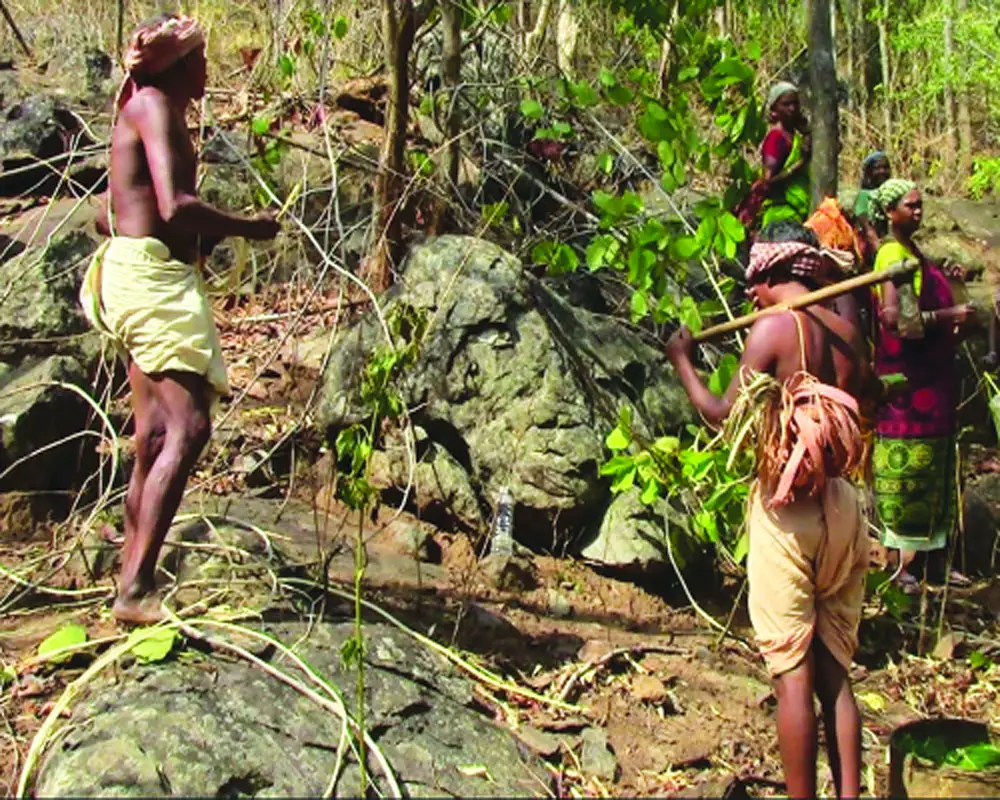
Traditional Forest Dwellers
Context
- The Jammu and Kashmir government is set to implement the Forest Rights Act.
- Approximately 1,200 tribal residents in Hunsur taluk, Mysuru district, face an uncertain future after local authorities rejected their review petition seeking recognition of claims under the Forest Rights Act.
- In 2019, the Supreme Court issued an initial order for the eviction of hundreds of thousands of individuals in 16 states whose claims as forest-dwellers were denied under the Forest Rights Act. However, the court later suspended this order to assess whether the proper procedures were followed by the gram sabhas (village councils) and the states in the rejection of these claims under the Forest Rights Act.
Historical Background
During the colonial era, the British Empire diverted the abundant wealth of our nation’s forests to fulfill their economic requirements. Various Acts and policies, including the Indian Forest Acts of 1865, 1894, and 1927, severely restricted the traditional usage rights of local communities that had existed for centuries. This situation persisted even after gaining independence, leading to the marginalization of these communities.
It was only in 1988, with the National Forest Policy, that the vital connection between forests and the forest-dwelling communities was officially acknowledged. This policy emphasized the necessity of involving tribal communities in the protection, rejuvenation, and overall development of our forests.
Subsequently, the Forest Rights Act of 2006 was enacted to safeguard the rights of the marginalized socio-economic groups within our society. This law aimed to strike a balance between the citizens’ right to a healthy environment and their fundamental rights to life and livelihood.
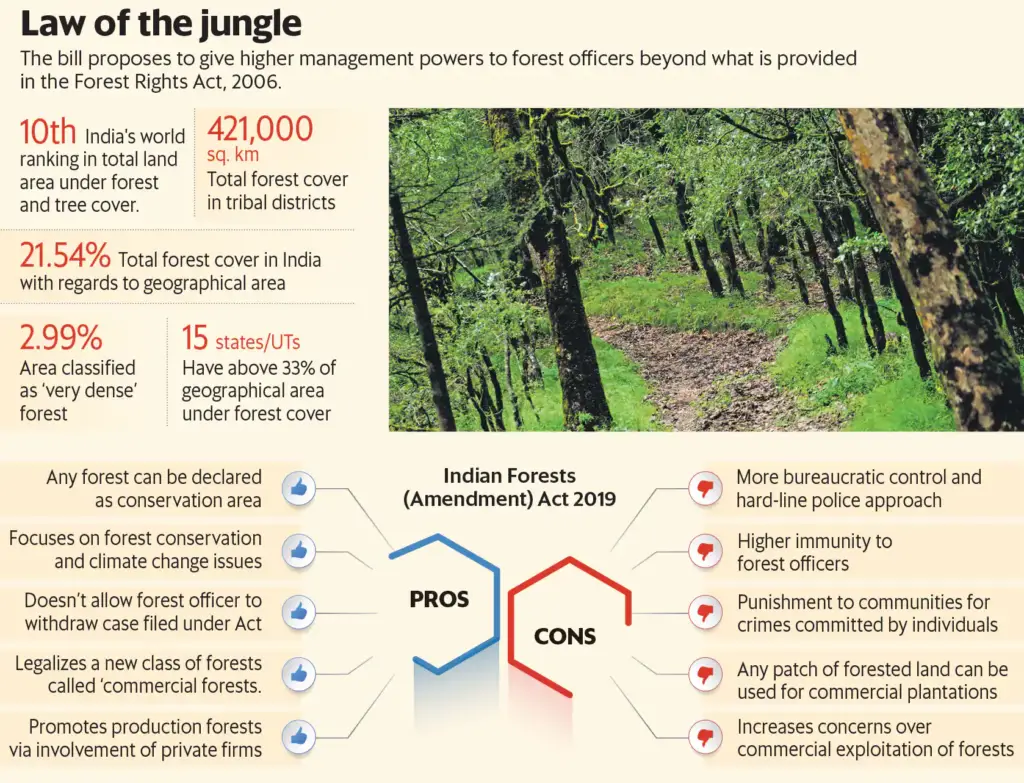
Forest Rights Act , 2006
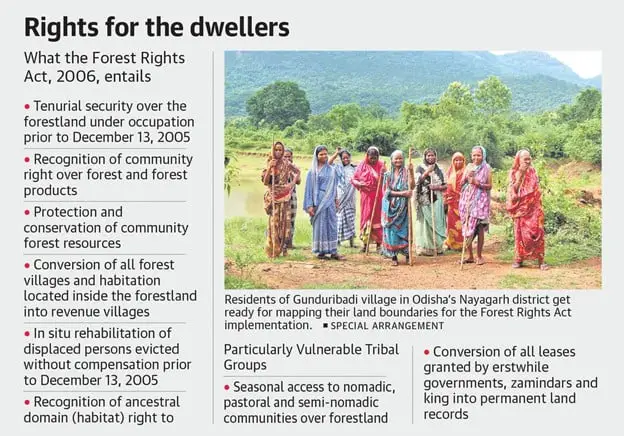
Act , Rules and Guidelines
Here is the official Central Government Document
The Scheduled Tribes and Other Traditional Forest Dwellers (Recognition of Forest Rights) Act,
The Scheduled Tribes and Other Traditional Forest Dwellers (Recognition of Forest Rights) Act, commonly referred to as the FRA, is designed to establish a rights-based, democratic, and decentralized approach to forest governance. This act recognizes various rights, including:
- Individual Forest Rights (IFR): These rights enable individuals within forest-dwelling communities to legally own and manage forestlands they have resided on and cultivated before December 13, 2005.
- Community Rights (CRs): These encompass ownership, utilization, and disposal rights concerning ‘minor forest produce,’ also known as non-timber forest produce (NTFP). CRs include rights like grazing, collecting firewood, fishing, and gathering other products from water bodies. They also cover rights related to biodiversity and intellectual property, particularly traditional knowledge.
- Community Forest Resource (CFR) Rights: These rights, outlined in Section 3(1)(i), are aimed at safeguarding, restoring, conserving, and sustainably managing forest resources. This provision encourages community governance over forest management.
- Empowering Provision of CFR: This aspect, the Community Forest Resource (CFR) rights, is especially empowering as it reinstates the control of forest governance from the forest department to the local Gram Sabha.
- Formation of CFR Management Committees (CFRMCs): Gram Sabhas create these committees, which are entrusted with preparing conservation and management plans for community forest resources. Their goal is to ensure the sustainable and equitable management of CFR areas.
International Guidelines
- The Paris Climate Agreement acknowledges the importance of enhancing the knowledge, technologies, practices, and efforts of local communities and indigenous peoples in tackling and responding to climate change.
- In light of this recognition, the UNFCCC – Local Communities and Indigenous Peoples Platform (LCIPP) serves as an open and inclusive forum that brings together individuals and their knowledge systems to foster climate resilience for everyone. Its primary objectives include:
- Knowledge Exchange: Facilitating the sharing of experiences and best practices.
- Building Engagement Capacity: Enhancing the capabilities required for implementing the Paris Agreement.
- Promoting National Initiatives: Encouraging the development of actions, programs, and policies at the national level while respecting and advancing the rights and interests of local communities.
Challenges
- States afflicted by Left-Wing Extremism, with a substantial tribal population, face notably high rates of claim rejections.
- Gram sabhas, the initiators of claim verification, often lack awareness and sufficient resources to effectively handle the process.
- Many of these tribal communities, residing in remote areas, are disadvantaged by poverty and low literacy levels, making it challenging for them to navigate the claim filing procedures. Furthermore, they often remain uninformed about the rejection decisions.
- The implementation of FRA has been inadequate, with the forest bureaucracy frequently misinterpreting it as a means to regularize encroachments rather than a welfare measure for tribal communities.
- Instances of hasty and arbitrary rejections have been raised by non-governmental organizations.
- The focus of the Tribal Affairs Ministry on settling claims has overlooked the qualitative aspects of capacity building and community empowerment, shifting the emphasis from the spirit of the law to a mere procedural checklist.
- The FRA predominantly leans towards individual rights, providing limited scope for the recognition of community rights, thereby neglecting the collective dimension.
The Path Ahead
- Streamlining Procedures: Simplify the claim filing processes to provide assistance for poor and illiterate tribal communities.
- Exploring Alternatives: Consider rehabilitation and other solutions rather than outright claim rejections.
- Harnessing Data: Provide relevant maps and technical tools like satellite or geo-tagging to gram panchayats to facilitate reliable claim estimates.
- Enhancing Engagement and Awareness: Involve grassroots-level non-governmental organizations as stakeholders to assist communities in capacity-building and undertake widespread information dissemination.
- Building Capacity: Conduct training and capacity-building programs for individuals responsible for implementing the Forest Rights Act, including Panchayats, Gram Sabhas, and village-level Forest Rights committees.
- Ensuring Accountability: Designate the Forest Department as the lead agency for resource management and development in collaboration with communities.
- Technical Support: Enable communities to manage resources independently with technical assistance from the Forest Department.

